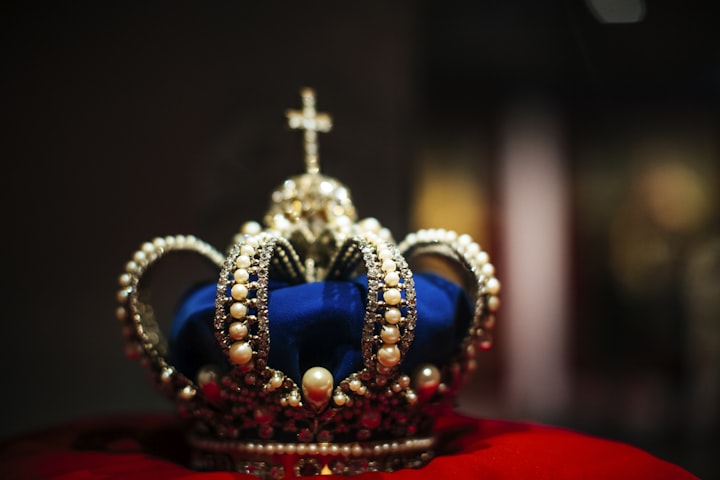The Power Spectrum of Tudor Women
From Glorification to Damnation

Throughout history, no one has ever felt neutral towards a woman in power.
For ages, women with power have been either idolized, like Queen Elizabeth I, or demonized, like Mary I. Rarely were there women in power that left indifference in their wake.
When I say this, I’m specifically talking about queens or leaders that had individual power: regnant and regent.
This means one of two things:
- Regnant: the royal lineage passes through the queen
- Regent: the Queen consort (married the late heir) reigns in the place of her child until he reaches his majority
These are the women typically thought to carry real power.
Nowhere is this complex topic better exhibited than within the Tudor family. Glorification is exemplified in Elizabeth I and Jane Seymour, though for highly different reasons. Damnation is found among Mary I and Katherine Howard.
Yet, many of the other Tudor women exist along a spectrum. They were beloved in their time and forgotten now, unpopular in the 1500s but now have a sympathetic following, or something even more complex.
Out of all the murkiness, one thing is clear: when it comes to women in power, there is very little neutrality.
Queen Elizabeth I
Perhaps one of the best-known examples of idolization is Queen Elizabeth I of England. As daughter of Henry VIII, she ruled in her own right.
But as the third child of Henry’s to take the throne - and second regnant queen in English history - she used her intelligence and cunning abilities to succeed and remain in power.
For instance, when going to war against the Spanish Armada at Tilbury, Elizabeth I offered a passionate (and later, famous) speech that roused troops and framed the war’s narrative:
I am come amongst you, as you see, at this time, not for my recreation and disport, but being resolved, in the midst and heat of the battle, to live and die amongst you all; to lay down for my God, and for my kingdom, and my people, my honour and my blood, even in the dust.
I know I have the body of a weak and feeble woman; but I have the heart and stomach of a king, and of a king of England too and think foul scorn that Parma or Spain, or any prince of Europe, should dare to invade the borders of my realm: to which rather than any dishonour shall grow by me, I myself will take up arms, I myself will be your general, judge, and rewarder of every one of your virtues in the field… we shall shortly have a famous victory over these enemies of my God, of my kingdom, and of my people.
This speech has become a defining moment in British history. Here, the queen bypassed her sex’s perceived limits and assured her troops she was just as capable as a king.
The defeat of the Spanish Armada cemented this and brought fame for England and Queen Elizabeth I. Their ability to defeat a major aggressor like Spain caused Europe to pay attention.
While the war continued until 1604, the outcome was no longer assumed. Foreign diplomats considered alliances with England and Elizabeth's popularity soared.
The impact of the victory for the nation's confidence in the Queen was vital.
England’s success was celebrated in various ways - all of which venerated Elizabeth.
She was a savior who staunchly protected her nation, shared the glory of success, and cited thanks for divine intervention.
This last part is key: Elizabeth I reiterated that God was on England’s (and her) side. The victory was the proof.
All of this contributes to why Queen Elizabeth I is one of history’s most well-known and well-loved female leaders. Her ability to outmaneuver her enemies and use ideals to her advantage was unmatched.
She even placed herself above humanity by taking on the nomenclature “the Virgin Queen.” According to the ideals of the time, it kept her as a purified and divinely-appointed leader.
More than that, it kept her in power. She refused to forfeit the crown to a husband. But also, she kept her courtiers in place by forcing them to constantly woo her favor, much like a lover would.
As much as she resisted traditional gender limits, she engaged with them to her advantage.
All of this attributes to why Queen Elizabeth I has become an idolized figure over time and the epitome of female rulers.
Vilified Women in Power
Perhaps the reason Queen Elizabeth I stands out is because so many other women were demonized. This includes rulers like Mary I of England, Catherine de Medici, and Mary Queen of Scots. All three were powerful rulers; however, all three left behind largely vilified legacies in history.
Mary I was nicknamed “Bloody Mary” for her slaughter of Protestants in England. Following her father’s (Henry VIII) and brother’s (Edward VI) Protestant reigns, Mary sought to return England to Catholicism. To this end, she had nearly 300 people executed.
However, it is believed that she killed fewer people than Elizabeth I when it came to religion. Yet, she ended up on the wrong side of history.
Though England loved her mother, Catherine of Aragon, and believed Mary a legitimate heir, their loyalty expired after her marriage to Phillip II of Spain.
Though an attempt to continue the bloodline and prevent Elizabeth from the throne, the English did not want a foreign ruler. Hatred against the Spanish, as well as growing Protestant resistance, worked against Mary I.
Between her staunch Catholicism (and resulting executions) as well as foreign marriage, Mary I left a bloody legacy of violence and failure to an independent England. 500 years later, this legacy still haunts her.
It is only in recent years that many have recognized her limitations, such as an unloving husband, undue influence from Catholic leaders, and failing health.
Scholars now believe she is not fully to blame for the catastrophe of her reign, but the image is harder to shed among the general public.
The Spectrum of Women In Between
However, regnant or regent queens aren’t the only ones to gain a reputation. This can be seen in King Henry VIII’s 6 wives.
Each of the 6 women have very distinct reputations, often due to propaganda during their own time cementing their reputation.
For instance, Catherine of Aragon is typically revered as a martyr. Not in the literal sense, but in the idea that a beloved, legitimate, queen was treated unfairly, and humiliated, by her husband.
Anne of Cleves, the wife whose marriage was annulled, has often been considered the luckiest of the 6. After being rejected by Henry VIII, she was treated more like a sister. This still gave her honor, but a higher level of protection than the others.
Catherine Parr is viewed as a loyal and subservient wife who cared for Henry in his final days.
However, growing in complexity is Katherine Howard’s legacy. She garnered a poor reputation for infidelity and being “sexually experienced” before her marriage. She was executed and buried without a funeral. However, many now sympathize with the teenage queen. Sources suggest that she was sexually harassed and disrespected by multiple men, including the king.
The two most dramatic reputations belong to Henry’s 2nd and 3rd wives: Anne Boleyn and Jane Seymour.
Anne Boleyn
Anne Boleyn falls in a hazy grey area between these two perceptions of good and bad. Clearly, she was the mistress that helped destroy Henry’s first marriage. Probably the most famous “other woman,” Boleyn was a key factor in England’s break with Rome.
The combination of Henry’s obsession, her refusal to be his mistress, Catherine’s inability to bear a male heir, and Rome’s refusal to annul his first marriage all motivated the break.
But, when you look closer, Anne’s personal convictions were Protestant. She used these to gain her position as queen, but also used her position in Henry’s life to further a cause she believed in.
She was beheaded for infidelity, but many scholars doubt the legitimacy of the accusations. At the time, Anne was highly unpopular. This is largely because of the dishonor she brought Catherine of Aragon.
But over the course of history, Anne has garnered the affections of many sympathizers for her quick rise and fall. In today’s age, she is often the most beloved and famous of the 6.
Jane Seymour
Not much is discussed about Henry VIII’s 3rd wife, largely because her reign was so short, lasting barely over a year. Yet, in that time, Jane was able to deliver what none of the others could: a son.
Her death in childbirth cuts her reputation to a minimum. Her effect on England is limited to her heir. But, her status was honored until Henry’s death, despite taking on other wives.
Because of her ability to bear a son, Henry revered Jane Seymour, at least politically in various forms.
In a famous family portrait, Jane is sitting next to Henry as rightful queen, even though she had already passed. This is because Henry wanted to establish her - and therefore their son’s - legitimacy over his older sisters.
The only thing unique about Jane Seymour’s legacy is her ability to fulfill her duty (as thought of by that time). Throughout history, hundreds of queens bore their kings sons. But Jane was the only one of the infamous 6 to follow suit.
So, while the other wives’ legacies are complicated and murky, hers is crystal clear and painfully predictable. Yet, this idolized her postmortem in the eyes of her husband, at least duty-wise.
Conclusion
The lives and legacies of the Tudor women are wrapped in complexity. Their reputations, both at the time and posthumously, vary widely along a spectrum.
However, the one thing they all clearly represent is that no woman in power, true power, is thought of with neutrality.
About the Creator
Ashley Tripp
I’m a freelance writer & artist. I create pieces about the things that move me with the hopes that they move my readers too. My work has been featured in multiple publications. Check out my website for more at https://msha.ke/ashleytripp






Comments
There are no comments for this story
Be the first to respond and start the conversation.